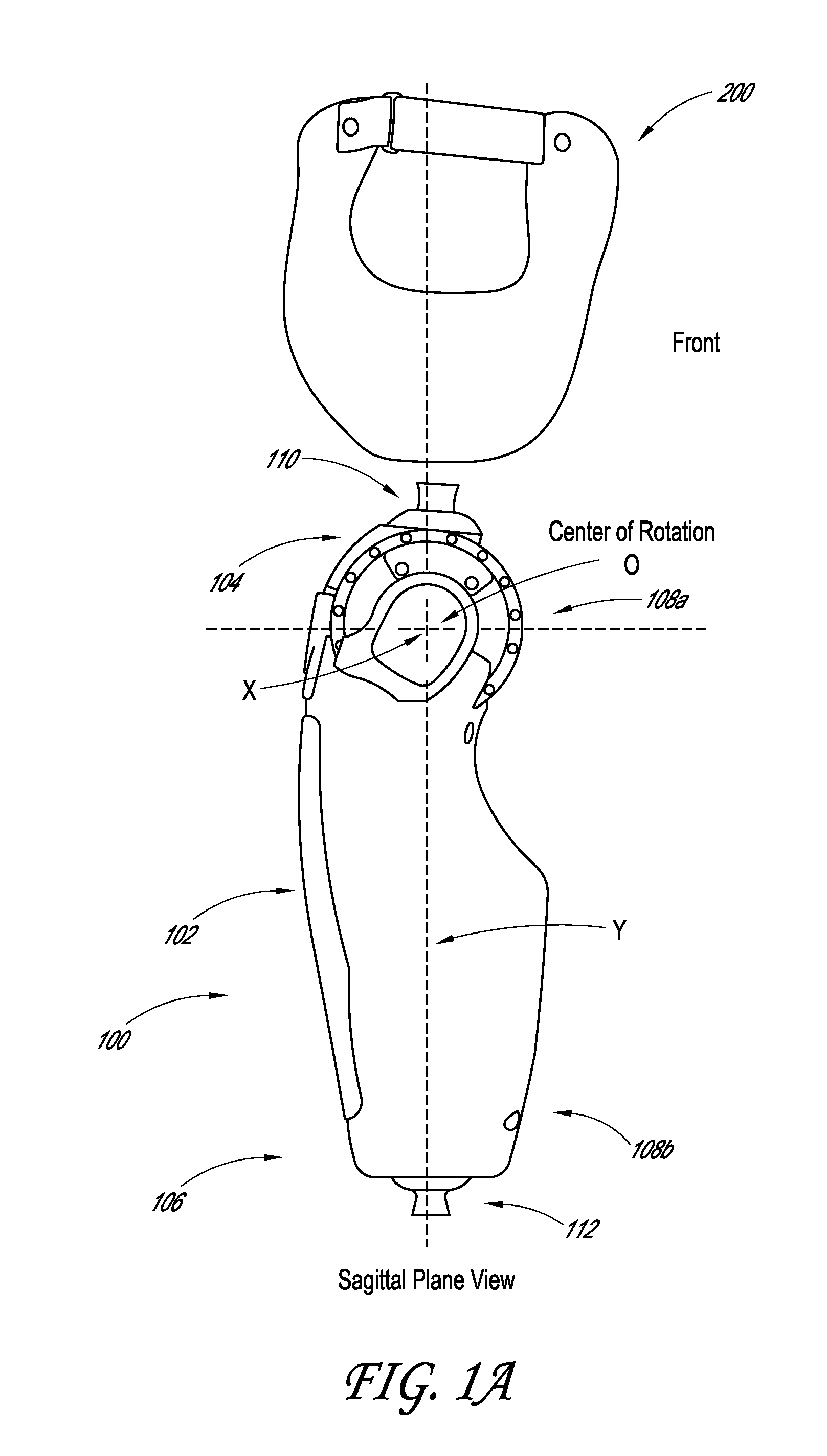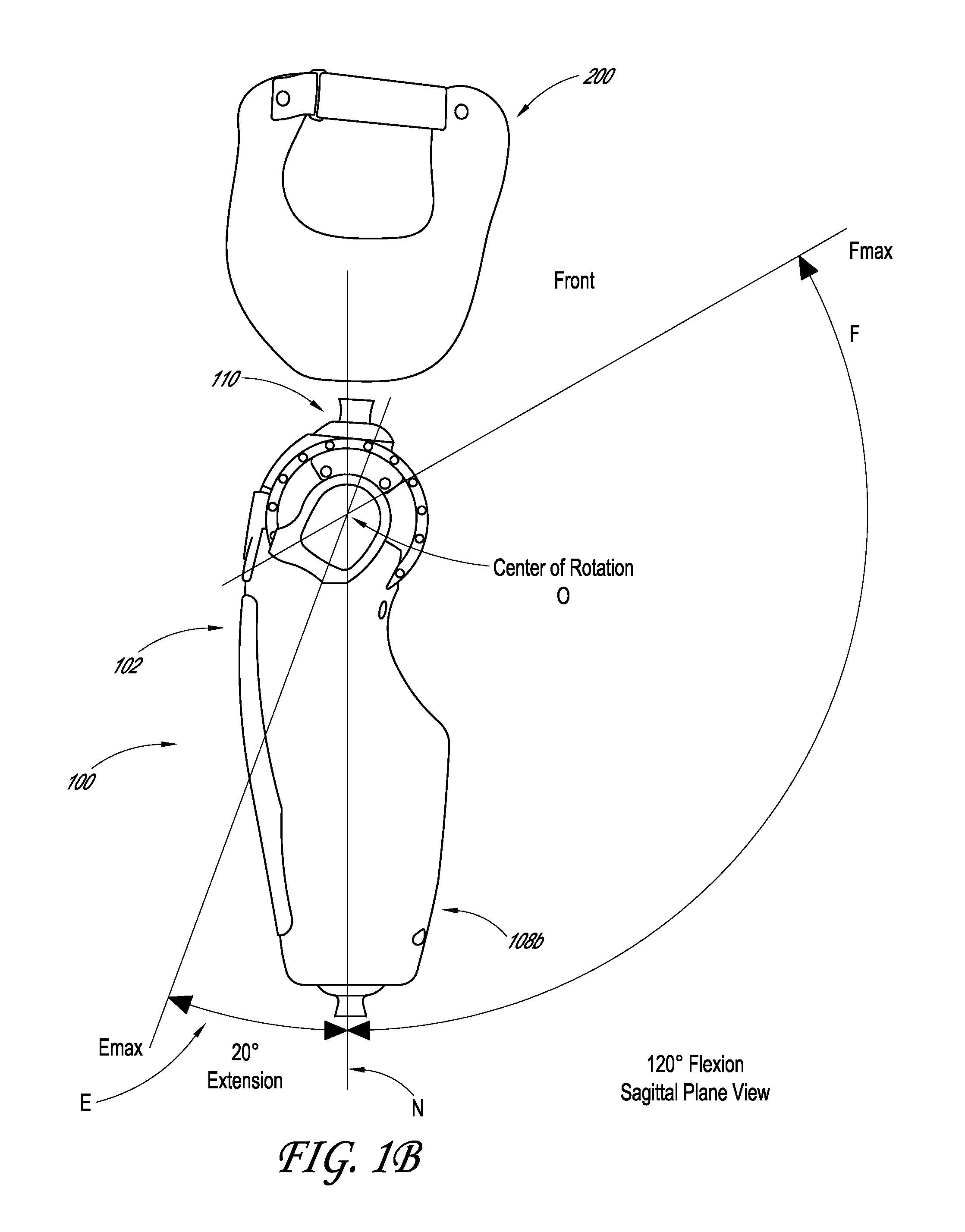Powered prosthetic hip joint
a hip joint and hip joint technology, applied in the field of prosthetic hip joints, can solve the problems of limited number of products available, affecting the mobility of users, and the stance control of hydraulic augmented mechanical hip joints that does not allow for stable hip positioning while standing, so as to reduce the and increase the apparent and/or effective stiffness of the hip joint
- Summary
- Abstract
- Description
- Claims
- Application Information
AI Technical Summary
Benefits of technology
Problems solved by technology
Method used
Image
Examples
Embodiment Construction
[0066]FIGS. 1a and 1b show one embodiment of a powered hip joint 100 of a prosthetic hip joint system. The powered hip joint 100 can have an elongated body 102 that extends between a proximal end 104 and a distal end 106, and can have a first connector 110 at the proximal end 104 and a second connector 112 at the distal end 106. In the illustrated embodiment, the first connector 110 can be a male pyramid connector and connect to a corresponding connector in distal end of a prosthetic component, such as a distal end of a prosthetic socket 200.
[0067]In some embodiments, the socket 200 is an envelope type socket that fits over a portion of an amputee's body, such as a pelvic area. Several embodiments include a socket that fits over a short stump, including a stump in the hip area. The socket 200 can have a connector to couple the socket 200 to the powered hip joint 100.
[0068]Several embodiments do not require a connector between the socket 200 and the powered hip joint 100. The socket ...
PUM
 Login to View More
Login to View More Abstract
Description
Claims
Application Information
 Login to View More
Login to View More - R&D
- Intellectual Property
- Life Sciences
- Materials
- Tech Scout
- Unparalleled Data Quality
- Higher Quality Content
- 60% Fewer Hallucinations
Browse by: Latest US Patents, China's latest patents, Technical Efficacy Thesaurus, Application Domain, Technology Topic, Popular Technical Reports.
© 2025 PatSnap. All rights reserved.Legal|Privacy policy|Modern Slavery Act Transparency Statement|Sitemap|About US| Contact US: help@patsnap.com



